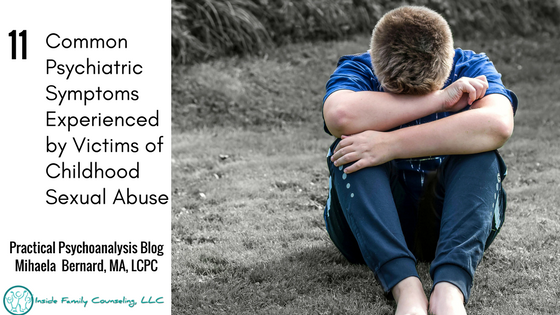Psychoanalytic theory and practice is based on extensive research and observation of infant and childhood development. In fact, as a part of my psychoanalytic training in working with children and adolescents, I had to observe the development of an infant and his relationship to his mother for two years, for a couple of hours every week. Much of what we deal with in psychoanalysis involves experiences prior to language development or beyond words and you can imagine that the first few years of a child’s life create the foundation for their development moving forward. Our work with adults often involves uncovering layers upon layers of convoluted messages from the subject of the unconscious that we listen to and bring to light.
Differences of psychoanalytic work with children from that with adults
Psychoanalytic work with children and adolescents is different from that with adults in several aspects:
- For one, parents are an important part of the work and having a strong therapeutic relationship with them assures the progress their children can make in the treatment.
- Second, children and adolescents spend most of their time at school and their ability to learn can be heavily impacted by their psychological state. Hence, coordinating care with teachers, social workers and school counselors becomes an integral part of the psychoanalytic process.
- Third, peer relationships have a different meaning for kids and adolescents than they do for adults. Exploring the relationship dynamics between friends and siblings takes a huge psychological space in children’s narratives.
- Fourth, kids and adolescents are still maturing and developing while we work together and the process of psychoanalysis takes a different form in that we work as much in the present as much as we look at the past and into the future. In that sense, the experiences we have in psychoanalysis with kids and adolescents can be extremely rewarding because change happens much faster. The opposite is true as well – the work can be challenging on many different levels, precisely because of the confrontation with parental authority, teachers and schools and their various expectations coming at the child or adolescent and their clinician that have little to do with the subject of the unconscious that is trying to express itself. Often what is considered progress from a psychoanalytic perspective is not always welcomed by others and the adolescent has to make space for what works within him/her into the life they have outside the couch.
- Fifth, the emergence of sexuality and sexual behavior is a unique aspect of childhood and adolescent development that often leaves lasting marks on a person’s adult sexuality as well. The question of sexuality is a taboo for some or too openly talked about for others – repression and inhibition on the one hand or a saturation of excitement on the other are the two polar opposites of the sexual development spectrum that we seek to balance out.
- Lastly, needless to say, children and adolescents do not always have the ability to express themselves with words the same way that adults do, for which reason we utilize a variety of techniques to facilitate that process, including play, drawing, painting, games, collage, play dough and music, to name a few.
Similarities of psychoanalytic work with children and adolescents to that with adults
The similarity between working psychoanalytically with children and adults has to do with the fact that we still work with symptoms and what cannot be otherwise expressed through words and language. We are still confronted with the work of the unconscious in one’s body and mind but the stakes seem higher because the impact we can make during these formative years will reflect on a child or adolescent’s life for years to come.
In cases when we work with child abuse, neglect, street violence and difficult family dynamics, creating a space for the true speech of an adolescent or a child can be quite challenging much like the work with adults. The urge to DO something rather than listen is fueled by anxiety, expectations and demands coming from parents, teachers, peers or loved ones. It is a real challenge to open up a space where the adolescents can confront their own selves and their own unconscious in the presence of an other, another adult, to whom they attach and attribute the same expectations, prohibitions and norms that the other adults in their lives occupy.
The same is true for adults, who are accustomed to speaking a certain way to people and come with the expectations that the clinician will tell them something about them they did not already know. This is a challenging position for a clinician, who has to balance these expectations while at the same time open space for the subject to express itself without fear of judgement or consequence.
In psychoanalytic work, as we make space for the subject to SPEAK about what cannot be said anywhere else, we open a space for the creative and aesthetic dimension of (young) people, who create or engage in sports activities that occupy both their minds and bodies in a healthy and constructive way. This is of course the outcome of our work and it takes time and the support of the parents of the child or adolescent to achieve it. The outcomes can be very much the same for the adult, who restores their ability to work, love and play. That result is truly BEAUTIFUL.








